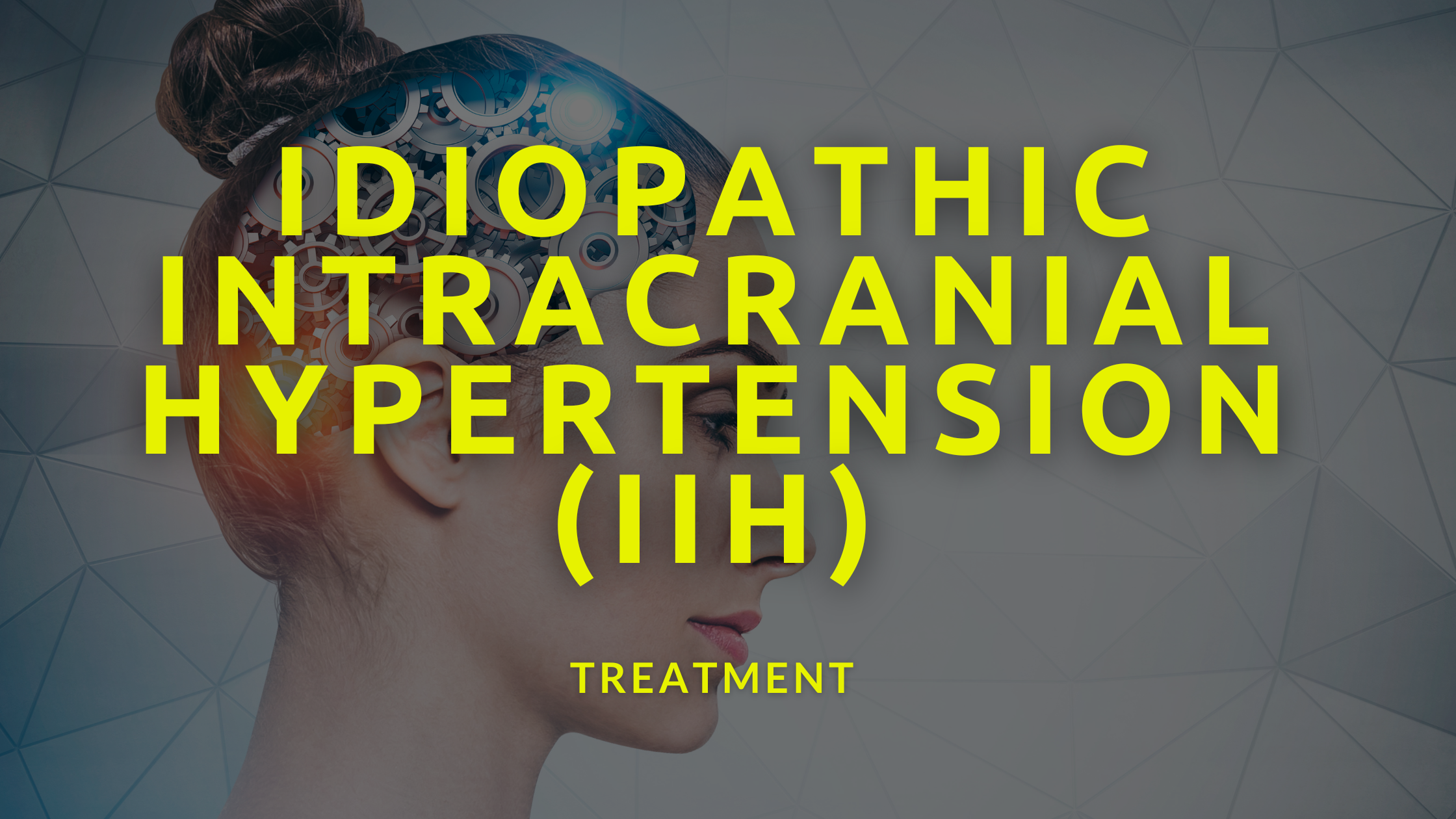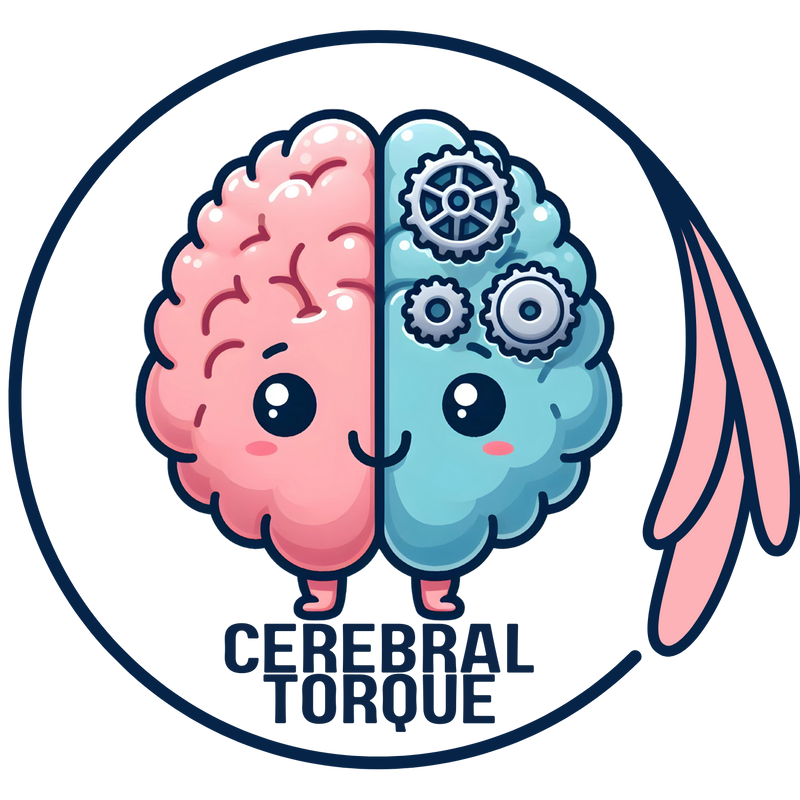Idiopathic Intracranial Hypertension Treatment
Posted on August 07 2023,

The below isn't medical advice, but educational knowledge to go prepared with when meeting with your neurologist.
Idiopathic intracranial hypertension (IIH), also known as pseudotumor cerebri, is a disorder defined by symptoms and signs of increased intracranial pressure, including headache, papilledema, vision loss, pulsatile tinnitus, and diplopia (double vision). This occurs in the absence of any apparent cause found on neuroimaging or other evaluations.
At one point in time, this condition was once referred to as BENIGN intracranial hypertension to distinguish it from secondary causes of intracranial hypertension which include neoplasms. This has been changed because this condition is, in fact, not benign and may cause disabling headaches and comes with a risk of vision loss.
Treatment Goals
We will focus on the treatment of IIH in this article. First, let’s start with treatment goals.
The two major goals in treating IIH are:
- Alleviating headaches (or other symptoms) and
- Preserving vision
Headaches in IIH can be chronic, severe, and debilitating. They may persist even after treating increased intracranial pressure. Furthermore, 5 to 15% of individuals with IIH are considered at high risk of permanent vision loss if the condition is not treated aggressively.
The visual loss in IIH is believed to arise from edema and axonal damage at the optic nerve head induced by the elevated CSF pressure. Patients may notice transient visual obscurations described as episodes of graying or loss of vision in one or both eyes lasting seconds to minutes. They may also develop visual field defects or impaired visual acuity from chronic papilledema. Severe papilledema as seen on ophthalmoscopy is a risk factor for poor visual outcomes.
Identifying Patients at Risk for Permanent Vision Loss
Features that can help identify patients at high risk of permanent visual loss include:
- Severe papilledema, classified as Frisén grades 3-5, have poor outcomes if they are not treated aggressively.

Soruce: http://morancore.utah.edu/section-05-neuro-ophthalmology/
(Severe/fulminant IIH is a subset of patients who progress rapidly with symptoms, have severe papilledema [grade 3 or higher] as mentioned earlier, have significant visual field and/or visual acuity loss, and/or have more than 30 transient visual obscurations per month.)
- If the patient complains of vision loss at presentation, this is considered high risk for permanent vision loss. However, if the patient complains of transient visual obscurations then that is considered intermediate risk.
- Other potential risk factors for vision loss include male sex, hypertension (systemic, not intracranial), anemia, pubertal onset of symptoms, severe obesity, and very high opening pressure on lumbar puncture.
Categories of Patients with IIH
Patients are divided into 3 categories:
- Patients with no vision loss
- Patients with mild vision loss
- Patients with severe/fulminant disease
Patients from all categories should try to eliminate risk factors, treat comorbid conditions, address obesity, consider a low-sodium diet, and continue to monitor vision with formal visual field testing.
Regarding eliminating risk factors, any potential precipitating medications like tetracycline antibiotics should be discontinued. Comorbid conditions such as sleep apnea and iron deficiency anemia should also be treated. Apneic periods during sleep increase CSF pressure and, thus, worsens IIH.
For weight loss, 6-10% in those with obesity, with referral to a dietician or weight management clinic. Bariatric surgery may be considered for morbid obesity. Weight loss may improve symptoms but effects on vision outcome are less clear.
Monitoring is important during treatment and until the patient is stabilized for all 3 severities. This means regular ophthalmology follow-up visits, initially at least monthly for those with concerning examination findings. Monitoring should include:
- Best-corrected visual acuity
- Formal visual field testing
- Dilated fundus exam with optic disc photographs
- Optical coherence tomography (OCT) of the optic nerve and retinal layers
Initial Treatment
For most patients, acetazolamide is the preferred initial medical treatment. It reduces CSF production and has been shown in a clinical trial to lead to modest improvement in visual fields, papilledema, CSF pressure, and quality of life compared to placebo over 6 months.
Patients with no vision loss (category 1) should either be started on acetazolamide or monitored closely depending on risk factors and severity of papilledema.
Mild vision loss patients (category 2) must be started on acetazolamide and those in category 3 (severe/fulminant disease) must be rapidly titrated up to the maximum tolerated dose or 4 g/day with acetazolamide.
Progression
If symptoms continue to progress, category 1 patients must be started on acetazolamide if they were not before. Category 2 patients can titrate acetazolamide up and add topiramate and/or furosemide (a loop diuretic). Topiramate may also contribute to weight loss. Category 1 patients that progress, despite the highest dose of acetazolamide, will also be treated as category 2 patents that progress.
Medications for migraine prevention like tricyclic antidepressants, valproate, or topiramate can help treat chronic headaches in IIH (TCAs and valproate confer a weight gain risk so monitoring weight is a good idea).
It is important to identify and avoid medication overuse/adaptation headaches as well.
Refractory Disease
For patients from all categories that continue to experience progressive visual loss (determined by abnormal visual acuity or worsening visual field deficits) despite maximal medical therapy, surgical procedures may be considered.
The two main options are:
- Optic nerve sheath fenestration
This involves making an incision in the optic nerve sheath to allow CSF to drain into the orbit and reduce pressure on the optic nerve. It is done under general anesthesia. Case series show stable or improved vision in 85-95% of cases but there are risks of complications like transient diplopia (35%), efferent pupillary dysfunction (11%), and temporary (up to 11%) or permanent vision loss (1-2%). Failure requiring repeat surgery occurs in up to 30% of patients.
2. CSF shunting
This involves surgical placement of a shunt to divert excess CSF from the ventricles or lumbar space to the peritoneal cavity. Reported rates of visual stabilization are up to 100% in some studies. However, shunt failure and need for revision are common. Shunt infections ans abdominal pain are potential complications among others.
There is no clear evidence showing one procedure to be superior. The choice often depends on local surgical expertise and patient preferences regarding risks and benefits.
Some controversial newer approaches like venous sinus stenting may be available at some centers, but they need further study to demonstrate efficacy and safety.
Urgent Treatment
In the rare instances of rapidly progressive IIH presenting with severe vision loss, urgent measures are warranted to limit permanent damage.
This includes:
- Acetazolamide at doses up to 4 grams qd.
- Consultation for interventions used in refractory disease listed above.
- Glucocorticoids. They may help temporarily in the setting of acute vision loss prior to surgical intervention. May cause weight gain (bad for IIH) and withdrawal may result in rebound intracranial hypertension.
- Serial lumbar punctures may also help temporarily (up to 6 hours) prior to surgical intervention to decrease CSF pressure. They may cause low pressure headaches among other complications of the procedure. May be used in pregnant patients looking to avoid medical therapy.
Other Medications
- Indomethacin is a cerebral vasoconstrictor that may reduce CSF production, but clinical data are very limited regarding its efficacy and safety in IIH.
- Iron supplementation may be helpful in IIH patients with iron deficiency anemia.
Prognosis and Recurrence Risk
With treatment, symptoms often gradually improve over months to years. Symptoms worsen if left untreated. Permanent disabling vision loss is seen in approximately 6-14% of patients overall.
Due to the risk of recurrence, patients should be monitored long term. Those with more severe initial papilledema require closer follow up over the first few years to monitor for progression or recurrence of symptoms and signs. Weight gain is a common trigger for recurrence of IIH.
Mon, Nov 17, 25
Migraine Research - During the week of my absence.
Migraine Research - During the week of my absence. The Association Between Insomnia and Migraine Disability and Quality of Life This study examined how insomnia severity relates to migraine disability...
Read MoreSat, Nov 01, 25
Anti-CGRP Monoclonal Antibody Migraine Treatment: Super-Responders and Absolute Responders and When to Expect Results
Anti-CGRP monoclonal antibodies achieved 70% super-response and 23% complete migraine freedom in a one-year study. Most dramatic improvements occurred after 6 months of treatment. For patients with chronic or high-frequency...
Read MoreAll Non-Invasive Neuromodulation Devices for Migraine Treatment
Wondering if migraine devices actually work? This guide breaks down the latest evidence on non-invasive neuromodulation devices like Cefaly, Nerivio, and gammaCore. Learn which devices have solid research backing them,...
Read More



